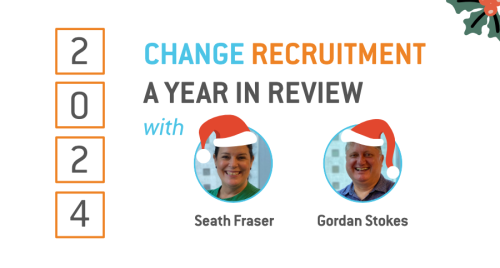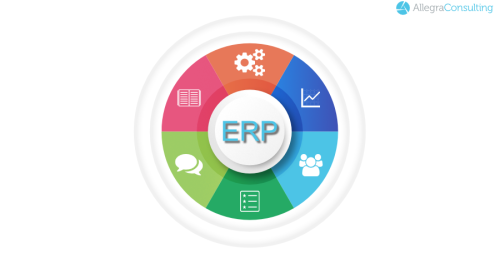
Who are the people and groups Change Managers need to help and drive successful Change Management outcomes? Find out more about these key stakeholders and read Caro’s tips around how to get the most out of them.
Change Practitioners – are the people who coordinate the change effort and support the wider project team. Enterprise Change Management is much broader than just in “projects” and to get Enterprise Change Management right, Change Practitioners need to work closely with many other groups of people across the organisation.
Caro: If there isn’t a practice across the organisation consider starting one up where you can share ways that work, frameworks, toolkits and generally support each other. Also networking with other change practitioners allows for the exchanges of knowledge, learnings and what has worked in other change programs.
Project teams and the PMO (project management office) – The team that drives projects to implement change and play a governance role to ensure projects and initiatives are well managed. The project team have a common goal of working towards delivering the project’s scope within time and budgets.
Caro: The project team you are part of should be engaged as a stakeholder group you manage – getting them across the key elements of the change gives you additional arms and legs to get your messaging out and manage key stakeholders.
Internal Communications Team – There should be a close working relationship with the internal communications teams to ensure the right messaging is communicated across key stakeholder groups and the wider organisation. Working closely with this team ensures messaging is consistent, accurate and carefully managed to ensure everyone is on the same page.
Caro: At the start of your project sit down with the Internal Communications team and agree on Roles & Responsibilities. If you don’t do this, you can end up in conflict with these departments where each of you can feel the other is “stepping on toes”. Getting them onside early though working out how to work together and how you can help each other be successful is critical.
Organisational Development, Talent Acquisition and Learning functions – These groups are extremely important when enabling organisations and employees to have the skills and capabilities necessary. In the fast-paced work environment where change is constant, we need to nurture employees who can be adaptable and flexible to survive and flourish, helping grow adaptive organisations.
Caro: Again these teams can be beneficial allies so it is important to sit down with them and work through where you might need their help and also get underneath the people capability strategies they have in place and how your project might enable some of the strategic work they are doing. Depending on how big your project and change team is, you may or may not need or have learning professionals. If you don’t, then a relationship with the Learning Function will be critical to your success. Remember you might also be using some of their key channels to deliver your change (such as the Internal Learning Management System) so building and maintaining a relationship is critical to the overall success of the change.
Change Coalitions – champions of change and key influencers amongst peers help achieve consensus and buy-in. A change champion network should be a priority.
Caro: I have seen these fail AND I have seen them work really well. Check first if the organisation has this type of network readily available that you can tap into. If it doesn’t consider setting one up – it can be really useful if the changes you are implementing impact multiple locations including multiple countries. Pick people that have both enthusiasm and influence in the business – having a role statement can be helpful. If the requirement from them to help will take a good portion of their working week, get your Sponsor to help you get some “official” time from their normal day to day job and get them recognised for this role. Consider multiple channels of engagement with them and look for opportunities to upskill them in change leadership skills so they help you implement the change and in return, you help them build some critical skills that will help further their learning and careers.
Sponsors – are the visible face of the change and actively builds commitment for the change particularly at the senior management level across the organisation.
Caro: Well all the research still tells us that the role of the sponsor is CRITICAL to success. Every time I am personally involved in leading a change project I always sit down with the sponsor and walk through my expectations of them as sponsor, even if they are a seasoned executive. I have found this a great way to build a relationship, and the sponsors have appreciated the clear direction from me on what I need. The need for sponsors can be built around three core activities:
- Sponsor to participate actively and visibly throughout the project
- Sponsor to communicate directly to employees
- Sponsor to form a coalition of sponsorship
Executive Leadership Team (ELT) - the level and complexity of projects will determine the necessary level of input required from this group. The Leaders and the ELT will be ultimately responsible for successful implementation and return on investment (ROI).
Caro: Typically, your sponsor will come from this group and possibly the business owner as well. Look to use the Sponsor and or Business Owner to influence this group if you don’t have the role/position/influence to deal at this level of the organisation. If you are capable and enabled to talk with these people keep it brief and really focus on how the change will impact their strategic business objectives. Ensure you keep regular meetings with your Sponsor to discuss progress, their activity and where you might have hit roadblocks and need their help. Sponsors also play a critical role in Stakeholder Engagement of key senior executives.
Leaders and Business owners – this group play a significant role to play in leading teams and supporting their people through the change. They have an intimate understanding of roles, accountabilities, work processes and the business operates. People leaders have day-to-day contact with employees; therefore, have a strong influence over the change is received and the overall success of the program.
Caro: Firstly, the business owner or product owner, if you are working in Agile, like the sponsor plays a critical role for me. I have their roles centred around three concepts:
- Advocating actively and visibly throughout the project
- Validation of key solutions
- Navigating the company and key stakeholders
Again, regular meetings and discussions are important, including with other key People Leaders across the business. Focus on what they need to do to lead their teams through the change and again look for opportunities to upskill them in Change Leadership, offering sessions and workshops to build these skills if you can. Tie this in with what that Organisational Development, Talent, People & Culture teams are doing and or leverage internal offerings where possible.
All employees and employee support groups – as we know employees need to be engaged early on and kept engaged before, during and after implementation of the changes. It is important that employee assistance programs, outplacement support, coaching and other support mechanisms should be made available. Employers do have a duty of care to their employees and should always be a consideration.
Caro: Yes I always talk about the two roles we play as Change Practitioners – one to help people through the “technical change” – where they might need to learn new ways of working, new systems, new processes and then the psychological journey where we support them through the mental and emotional journey of change - the balance needs to be right on both sides – you need to manage both aspects to ensure the change is well managed.
Just a final note that I think is important to mention. Change professionals also need to care for themselves and their colleagues or otherwise be at risk of “burning out”.
Caro: It is true most of us wear a few scars on our backs from the projects we have been on, often we love and get almost addicted to the project, the satisfaction of seeing things implemented and the great feeling being part of the team, often working hard and fast to change organisations BUT we can burn out, often don’t take care of ourselves, so a great reminder to do that!







